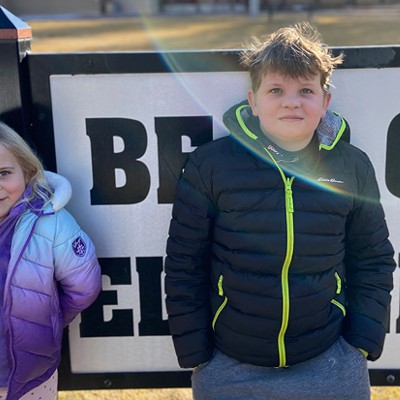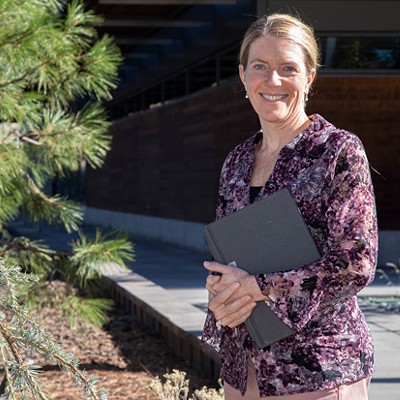In the wake of the most recent mass shooting—this time in Isla Vista, Calif., near the University of California at Santa Barbara, where Elliot Rodger allegedly killed six people including himself—the ripple effects are coursing through the nation's consciousness.
While "active shooter events," as the FBI calls them, have been a part of our social fabric since colonial times, their frequency and severity, as well as the public awareness and discourse about them, has risen in the last decade, particularly since 2008.
The FBI reports that from 2000 to 2008 there were approximately five ASEs per year (not including gang-related shootings), but between 2009 and 2013 that number tripled, approaching 16 annually. So it's not just a growing awareness or more hyper and prolific news coverage—these violent acts are really becoming more frequent.
But those events are not without reaction, especially from schools, where shootings often happen—only places of business are a more common site of violence. Locally, two recent developments are providing schools new options for preventing and responding to violent incidents—in one case, a stronger police presence at a local high school; and, second, in another, less orthodox approach, looser regulations regarding firearms at Central Oregon Community College.
At its May 21 meeting, Bend City Council approved hiring an additional school resource officer to be stationed primarily at Marshall High School. According to Summit High School Resource Office Scott Vincent, Officer Chris Stokes will start this fall after completing national and state-level training for school resource officers.
"Part of our job is set up for the security of the school, but that's just a small portion; 85 to 90 percent is building connections with kids," Vincent says. "Most of my time is spent dealing with personal conflicts."
Still, the security piece is important and Vincent says Bend-La Pine schools are well prepared to respond to an attack. Last fall, he revamped the district's active shooter response protocols. This spring, he attended a conference in Chicago where he spoke with experts in the school safety field.
"We are doing everything that they are saying and then some," Vincent says. "We are really at the front edge of the national standard."
When police got the call last February that there was a student with a gun at Bend High School, they put those protocols into action.
"We didn't know if this was an active shooter, a suicide, or someone showing a weapon," Vincent explains. "We were treating this as an active threat. It was clear when we got there that it wasn't, but we still needed to make sure the school was safe and that nothing else was going on."
Vincent says police responded to Bend High in just 90 seconds. According to a January report by the Federal Bureau of Investigation, the median law enforcement response time to active shooter events (suicides do not meet the definition of an ASE) from 2000 to 2012 was three minutes.
Those few minutes can make all the difference. The FBI report analyzed the 110 active shooter events during that 12-year period and found that nearly half ended before law enforcement arrived on the scene. Of those cases, 33 percent ended because people on the scene subdued the attacker—the remaining cases ended because the perpetrator committed suicide or fled the scene.
That means that the greatest opportunity to halt these violent incidents lies with students, faculty and staff. In most cases, bystanders physically restrained the perpetrator; only three were stopped by a gun.
Yet, despite a lack of evidence to suggest more guns equal greater safety, security concerns have prompted Central Oregon Community College to change its firearms policy to allow people with concealed weapon permits to bring loaded firearms on campus.
"We've gone from a very simple broad statement, to something more specific," explains Campus Public Safety Supervisor Seth Elliott. While the previous policy was a blanket ban on all weapons, the new rule permits an exception "as provided by ORS [Oregon Revised Statute] 166.360, 166.370, and federal law."
In other words, students, staff and faculty can pack heat, so long as they have the appropriate sheriff-issued permit. Elliott says the revised policy seeks to strike a balance between two divergent perspectives: that guns have no place on a college campus, and that they contribute to a more secure environment.
If, as records suggest, about one in 16 Deschutes County residents hold a concealed weapon permit, there may be upward of 1,000 permit holders currently enrolled at COCC. Elliott says he hopes they will never have cause to use them.
"We have an active threat assessment and prevention team (TAPT) that reviews situations and takes a collaborative approach to dealing with potential threats," he explains. When someone makes a direct or indirect threat of violence, "we kind of push the pause button."
Public safety works in conjunction with faculty, student life and local law enforcement to determine the best approach, up to kicking a student out of school or letting an employee go. Elliott says one or two students are asked to leave each year. If there are concerns the student will retaliate, he adds, he may alert law enforcement.
Fortunately, he adds, the school has never had to deal with an active assailant situation. And despite the occasional bomb threat or suspicious item alert, no dangerous items have been found on campus.
"I love to get those calls because it means our campus community is paying attention," Elliott says.
His approach to safety is centered on awareness. Unlike the local high schools, which are required by state law to perform regular drills for a variety of emergency situations, including active assailants, COCC doesn't do drills. Elliott says that while staff may run through various scenarios, the school is simply too large to coordinate a campus-wide drill. And more extreme re-enactment style approaches don't jive with his philosophy.
"You can't totally surprise people," he says. "Trauma doesn't teach."
Ultimately, preventing and responding to school violence takes a community wide approach, he says. And Kathy Biles, the professor who heads up OSU Cascades' school counselor program, agrees.
"Prevention is the big word," Biles says.
Students can help by telling an adult when they have concerns about themselves or others, or by participating in peer counseling programs to support one another.
"We can do a lot to teach kids to also be reporters," she says. "Other kids are going to be the first ones to know something's not right."
At the high school level, school resource officers use a text-to-tip program that allows students to communicate discreetly with the officers about criminal activity or concerns about the well being of friends.
Vincent and Biles added that support staff, like SROs and school counselors, can provide resources to help students manage conflict and address mental health issues. And teachers and parents can be on the lookout for changes in behavior.
But it's not just school staff and parents who have a part to play, Biles adds.
"We can be the people who recognize and connect to resources," she explains. "As community members, as adults, talk to kids.... They'll turn to a trusted adult. It may not be a teacher or parents. It may be a neighbor or a friend's mom."




























